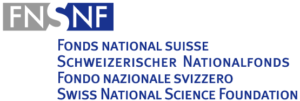 Eratosthenes is a research project funded under the Spark funding scheme of the Swiss National Science Foundation (SNSF). The aim of the Spark is to fund postdoctoral researchers to implement "projects that show unconventional thinking and introduce a unique approach". The relevant criteria for the award of Spark grants are the originality/novelty of the idea, the unconventionality of the proposed research project, the scientific quality of the project and the potential for significant impact. Dr. Grigorios Anagnostopoulos, postdoctoral researcher of the dmml group, is the grantee of the Eratosthenes project.
Eratosthenes is a research project funded under the Spark funding scheme of the Swiss National Science Foundation (SNSF). The aim of the Spark is to fund postdoctoral researchers to implement "projects that show unconventional thinking and introduce a unique approach". The relevant criteria for the award of Spark grants are the originality/novelty of the idea, the unconventionality of the proposed research project, the scientific quality of the project and the potential for significant impact. Dr. Grigorios Anagnostopoulos, postdoctoral researcher of the dmml group, is the grantee of the Eratosthenes project.
The ambition of the Eratosthenes project is to integrate the recent advancements of the field of generative modelling within the application domains of indoor and outdoor positioning. More specifically, the aim is to mitigate the barrier of the data collection requirement of fingerprinting localization methods through generative modelling.
SNSF webpage of the project: http://p3.snf.ch/project-195964
Related past project: http://dmml.ch/orbiloc/
Related Blog post: http://dmml.ch/outdoor-positioning-for-the-iot-world-2/
Abstract
The proliferation of Location Based Services through smart devices has supported a variety of services. Unlike outdoor positioning, where systems such as the GPS or Galileo are considered a de facto standard, indoor positioning has presented systems utilizing a big variety of technologies and positioning methods. The main categorical division of these methods is set between ranging and fingerprinting methods. Moreover, the recent emergence of the usage of Internet-of-Things (IoT) technologies and their usage in creating Low Power Wide Area Networks (LPWAN) has shaped a new landscape in the field of outdoor localization. The low-power devices used in LPWANs cannot afford the battery consumption of a Global Navigation Satellite System (GNSS) chip set, such as the GPS. Therefore, an alternative approach is needed in order to localize these low power devices. Similarly, to the indoor positioning, ranging and fingerprinting methods are two main competing approaches for LPWAN positioning as well. Fingerprinting methods generally offer a higher accuracy of localization but suffer from the disadvantage of requiring a tedious and costly data collection phase. Since fingerprinting is a purely data-driven approach, the way data are collected, the volume of the collected data and the way they are utilized in the modeling phase determine the cost and the performance of such methods. In practice, the main barrier that often prevents the selection of fingerprinting is the data collection requirement.
In the Eratosthenes (deep gEneRative modeling for indoor And ouTdoor pOSitioning wiTH fingErprintiNg mEthodS) project we propose a reproducible and systematic study of the potential contributions of generative modeling in fingerprinting localization methods. Our envisaged utilization of generative models is threefold. Initially, (i) we will investigate the concept of fingerprint augmentation through generative modeling. Achieving a reliable generation of fingerprints could have a great impact on how fingerprinting positioning systems are designed, tuned and deployed. Secondly, (ii) we will examine the potential benefits of encoding the fingerprints in the more compact representation of a latent space provided by (variational) autoencoders and operating lightweight ML models on this latent space. Lastly, the most ambitious part of Eratosthenes is (iii) the incorporation of crowdsourced, unlabeled data, in order to strengthen the predictive capabilities of the positioning model, by using Semi-Supervised Learning with deep generative models. Currently, all the volume of unlabeled data that occurs during the operation of positioning systems is only used to feed the model which produces position estimates. Utilizing these huge volumes of data for learning a better latent representation and improving the positioning model would constitute a paradigm shift for the field.
The indoor positioning research hasn't integrated in a systematic way the recent breakthroughs of the machine learning field. Moreover, during the last few years, there has been an effort to strengthen the consistent evaluation, the comparability and the reproducibility of published works of the field. In this regard, and in terms of the project’s implementation, we will use the most relevant public datasets, that function as benchmarks and will proceed with an open-data, open-code policy. The ambition of the project is to offer a systematic, rigorous, unambiguous, reproducible and consistent overview of the capabilities of generative models to improve fingerprinting techniques, which is a missing piece of the puzzle of the field. The unconventionality of the approach and the potential of a scale-up improvement of the trade-off between improved accuracy and reduced data collection effort is truly appealing. Moreover, the impact of potentially mitigating the barrier of the data collection effort would be the shaping of a new landscape in deployed positioning systems.
Results at a glance:
- We introduced the ProxyFAUG method, which is the first proximity-based fingerprint augmentation method proposed in the literature. ProxyFAUG improves the achievable positioning accuracy of fingerprint datasets, by introducing a rule-based, stochastic, proximity-based method of fingerprint augmentation. The method offers a systematic and significant performance improvement at the lower error quartiles, as indicated an the impressive improvement of the median error (40%) at the tested dataset .